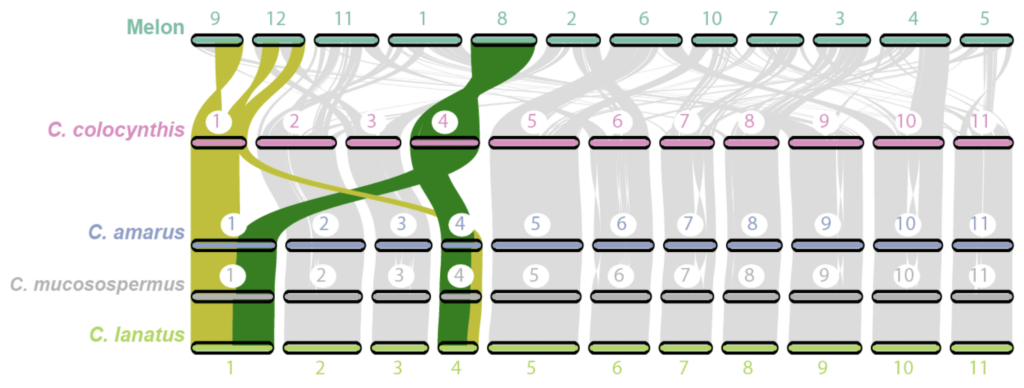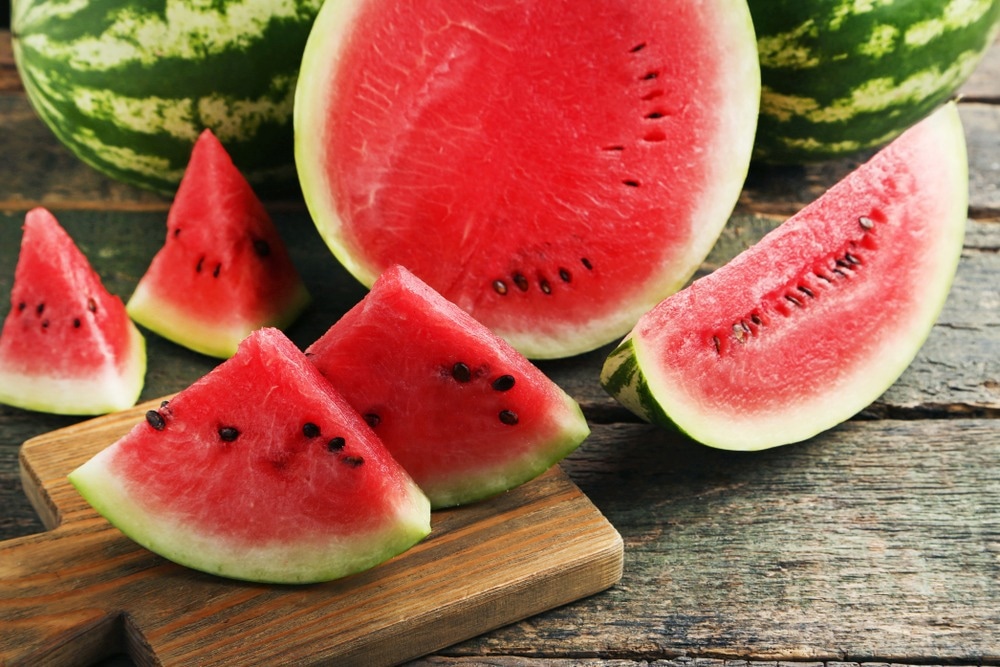Reviewed by Danielle Ellis, B.Sc.Aug 14 2023
In terms of overall production and economic value, watermelon is an important agricultural commodity on a worldwide scale.
 Divergence and genome evolution of watermelon species. Synteny among the genomes of melon, C. colocynthis, C. amarus, C. mucosospermus and C. lanatus. Image Credit: Boyce Thompson Institut
Divergence and genome evolution of watermelon species. Synteny among the genomes of melon, C. colocynthis, C. amarus, C. mucosospermus and C. lanatus. Image Credit: Boyce Thompson Institut
The Boyce Thompson Institute's scientists have created a comprehensive “super-pangenome” for watermelon and its wild relatives, revealing helpful genes lost during domestication that might increase this important fruit crop's disease resistance and fruit quality.
We aimed to delve deeper into the genetic variations that make watermelons so diverse and unique. Our findings not only provide insights into the evolutionary journey of watermelons but also present significant implications for breeding and disease resistance.”
Zhangjun Fei, Study Lead Author and Professor, Boyce Thompson Institute
Utilizing reference genome sequences and genome resequencing data from 547 watermelon accessions from four different species—cultivated watermelon (Citrullus lanatus) and its wild relatives C. mucosospermus, C. amarus, and C. colocynthis—the watermelon super-pangenome was created.
Analyses of the super-pangenome found several disease-resistance genes present in wild species were eliminated during domestication as early farmers selected for fruit quality features such as sweetness, flesh color, and rind thickness.

Image Credit: 5 second Studio/Shutterstock.com
Fei further added, “These beneficial genes could be reintroduced into modern cultivars to breed more resilient watermelon varieties.”
The finding of a tandem duplication of the sugar transporter gene ClTST2 that improves sugar accumulation and fruit sweetness in cultivated watermelon was a crucial discovery of the study, which was just published in the Plant Biotechnology Journal. This genetic variation was uncommon in wild watermelons, but it was chosen during domestication.
“The super-pangenome provides a valuable genetic toolkit for breeders and researchers to improve cultivated watermelon. By understanding the genetic makeup and evolutionary patterns of watermelons, we can develop varieties with enhanced yield, increased disease resistance, and improved adaptability,” Fei concluded.
Source:
Journal reference:
Wu, S., et al. (2023). A Citrullus genus super-pangenome reveals extensive variations in wild and cultivated watermelons and sheds light on watermelon evolution and domestication. Plant Biotechnology Journal. doi.org/10.1111/pbi.14120